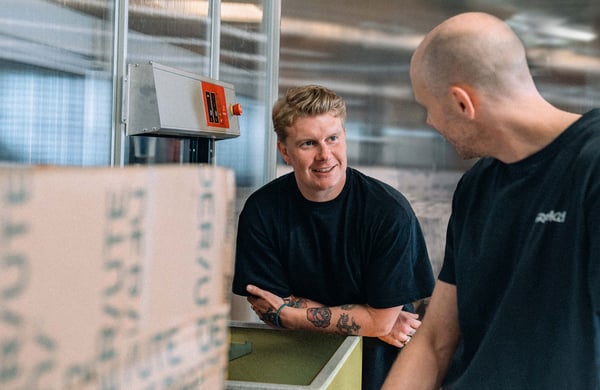The increasing rate of change across industries—sparked by digitalization, aging populations, advancing technology etc—calls for evolution and innovation. For warehouses, this means implementing automation.
Fear-mongers cry out, “Robots are stealing our jobs!” But it’s not true. Automation is here to make jobs easier for people—not replace them. Robots take on the brunt of repetitive, grueling manual labor often found in fulfillment centers and ease the burden for businesses struggling to find skilled workers they can retain.
So let’s dispel the controversy with 5 truths we’ve distilled from our experiences working with robots and humans, side by side.
1. Automation Enhances Human Productivity—It Doesn’t Replace It.
In the olden days, humans got around with a horse and buggy. As you’re aware (we hope), today we use cars. Just as cars exist to make our lives easier, and help us cover more ground than we could on our own two feet, automation exists to make our jobs easier, and give us an extra hand to get more done. Automation is nothing more than another tool to be leveraged by humans to free their hands from menial, frustrating tasks so that they can focus on doing their best work.
2. Automation Improves Human Working Conditions.
The traditional warehouse requires a manual worker to walk an average of 10 miles a day. And as customers demand their orders faster and faster, workers feel the pressure to fulfill at unsustainable speeds that often require “shift rotation” as they exhaust themselves over hours. Manual workers are often required to lift heavy loads, and carry them across long distances. And all of this takes place largely in environments that are far from pleasant—dimly lit, cavernous, and cold.
Automated technology creates a safer, more human environment for workers that reduces the chance of on-job injuries and long-term physical pain. It eases the physical burden of picking and order fulfillment, so that human workers no longer have to wear out their bodies on a daily 10-mile hike that gets them nowhere.
3. Automation Helps with Labor Retention.
Warehouses are plagued with high rates of employee turnover. Not many people are willing to remain working in the conditions of a traditional warehouse, with its high physical demands. Nearly 60% of the companies in a recent study named retaining workers as one of the biggest challenges in their warehouse operations.
Implementing automation gives businesses a huge boost in labor retention. In the enhanced working environment of an automated warehouse, people tend to enjoy their job more and are therefore more likely to stay long-term. We’ve heard from our customers that their employee satisfaction has shot up ever since installing Pio. And recently, we spoke to an employee of our customer Famme, who shared that she might not even have taken the job, if there hadn’t been a Pio system saving her from the exhaustion of non-stop walking.
4. Automation Unlocks Business Growth and Profit Even Amidst Labor Shortages.
Warehouses are currently dealing with labor shortages—in Europe, almost 3 in 10 firms reported constraints in the second quarter of 2022 due to a lack of workers. And as older employees retire from the workforce, there will be fewer and fewer young recruits to take their place. In the next five years, the labor shortage was named as one of the top challenges for global fulfillment.
Warehouse automation mitigates the labor crisis, helping businesses weather change across time. Businesses choose to adopt automation not only to increase efficiency, but also to future-proof their operations against unpredictable labor shortages. Requiring fewer employees and enabling greater productivity, these automated warehouses can continue running smoothly even as worker availability and skills fluctuate with changing demographics.
5. Automation Creates New Job Opportunities.
Traditional warehouses are only tapping a tiny fraction of their workforce’s potential—automation actually adds value to human work that requires complex decisions, creativity, and problem-solving. Rather than limiting employees to mundane manual labor, automation gives them growth opportunities. Employees can uplevel their skill sets to higher-paying jobs that require a human touch, such as management, quality control, or customer service. For instance, our customer Vakre Vene found that once they installed Pio, they needed fewer hands in the warehouse, and were able to promote several workers to roles in sales and marketing.
So, workers don’t necessarily lose their jobs once automation comes into play. Rather, they can move into roles that are far more motivating and engaging over time.
In Conclusion…
At the end of the day, technology is a tool that empowers humans to do more meaningful work. We recommend that business owners and managers have respectful, transparent conversations with employees before installing automation. It’s important to alleviate fears and create understanding of the incredible benefits of this technology, for employers and employees alike. Warehouse automation fuels business growth—and as businesses grow, more jobs are created than they are lost.
Because as long as humans are around, human work will never be obsolete. The robots are simply here to give us a hand.





